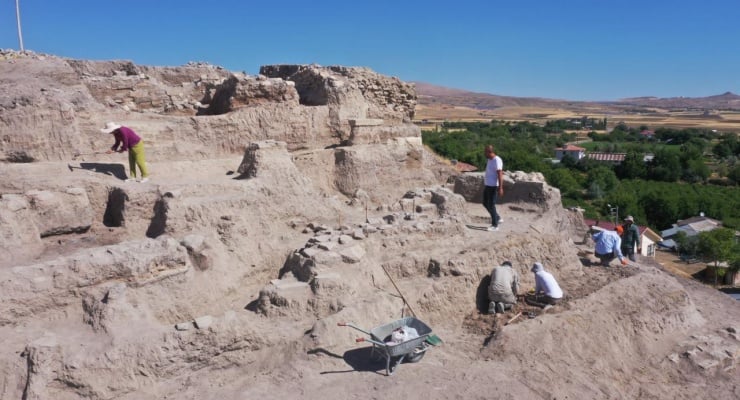6,000-year-old temple with ritual bloodletting canal discovered in Turkey

A team of archaeologists made an extraordinary discovery – they discovered a temple with a channel for ritual bloodletting, which is about 6,000 years old. It happened in Elazig Province, Turkey. Dating back to the Copper Age and Early Bronze Age, the structure is one of the oldest ritual buildings in the Upper Euphrates Basin, informs Archeonews.
The excavations, which took place under the auspices of the Ministry of Culture and Tourism and under the direction of the Elazig Museums Directorate, focused on the Tadim fortress and mound, known as Tadim Heiyugu. This archaeological complex reaches 35 meters in height and covers an area of 210 by 160 meters. Archaeologist Ergun Demir explains that the area probably served as a religious and settlement center, combining spiritual practices with early forms of social organization.
In sections 80–81 of the mound, the researchers came across a temple complex with a special channel that was used during the ritual bloodletting ceremony. During the research, archaeologists found the remains of animals and people, as well as a stone altar with traces of cuts. Four platforms were also excavated – they were apparently used for sacred gifts, hearths and other ceremonial objects.
Among the finds are Nakhchivan-style pottery, seals, arrowheads, spindles, and symbolic figurines made of clay, stone, and bone. The features of the temple’s architecture testify to the presence of elements of early urban planning: the buildings were built on rubble foundations with walls made of clay bricks, and dense buildings and common infrastructure objects indicate a developed coordination within the community. The location of the temple near the Euphrates gives additional weight to the discovery, as the area was a key cultural corridor between Mesopotamia and Anatolia.
The director of the regional department of culture and tourism, Ahmet Demirdag, noted the exceptional importance of the excavations:
“This is the first known site of a temple in the region. The finds give us a rare glimpse into life here 6,000 years ago — how people lived, worked and worshipped.”





